After touring Hemingway's Finca Vigia home and the Hemingway monument at Cojimar, Abel, our guide, asked us if we wanted to see more Hemingway sights. "Yes, of course, I replied." Then it would be off to the Hemingway Marina the next day.
Billy was lucky enough to have sufficient gasoline for another twenty mile run out to the west end of Havana this time. Would we also be interested in seeing some Cuban art and artists? Linda had the enthusiastic response this time. And so began our journey to the magical mosaic world created by José Fuster.
Once again, Abel and Billy arrived at 10:00 a.m. in Billy's 1950 Chevrolet Deluxe convertible. This time, we drove with the top up to hold back the Caribbean sun.

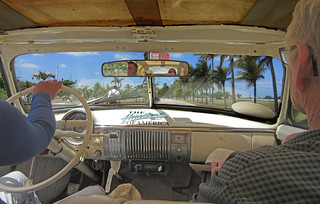

Our route would take us north along the harbor again, onto the Malécon, and about a dozen miles to the west.
We passed the now-familiar landmarks along the waterfront, and as we turned onto the Malécon, Linda spotted a tall sailing ship approaching the harbor entrance.



Trying to get just one more picture of the ship from the Chevy window, my view was blocked by a pillar. But sometimes, just plain luck works out. I ended up with a picture of the plaque commemorating U.S. General Leonard Wood, commander of the Rough Riders during the Spanish American war - and creator of the Malécon.
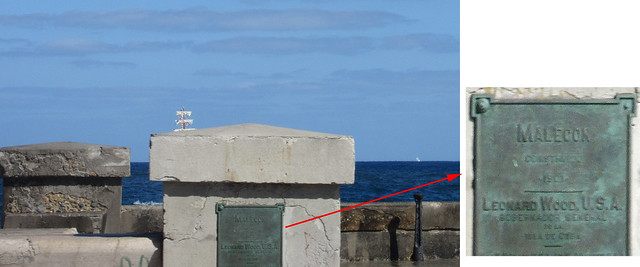
The view of New Havana was particularly clear this morning.

The Hotel National and Focsa building (see earlier post) stood out along the shoreline.
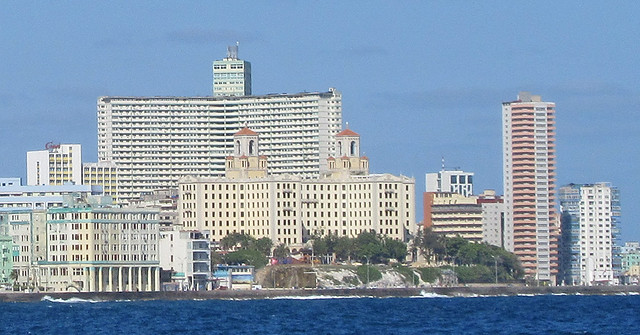
A bit farther along, in Miramar, we passed the Karl Marx Theater, largest in Havana and notable (at least to me) for an appearance in 1956 by Liberace on his first international tour. Of course it had a different name at that time, Teatro Blanquita.
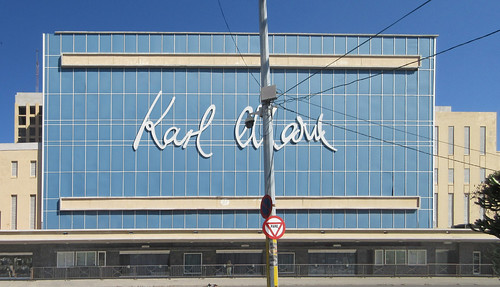
The stretch of coastline extending from Miramar to the west is probably as beautiful as on any of the Caribbean islands.

The first sign that we were approaching a "special place" along the Havana shoreline was this colorful mosaic bus stop titled "Tribute to Gaudi" with a large spider peering over the wall! Not being much of an art-history buff, I would have to look up Gaudi at a later date to discover the whimsical nature of his brand of art and architecture as developed in Catalonia, Spain.
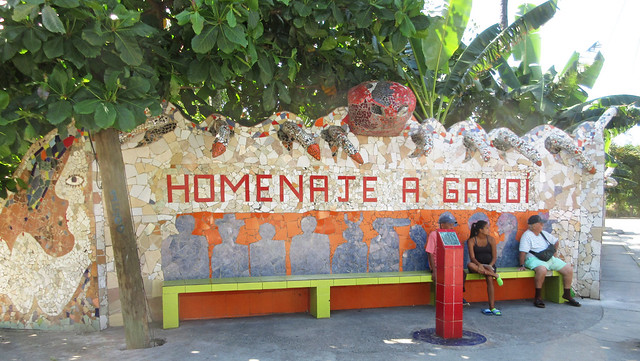
Although Fusterlandia was developed by José Fuster, numerous other artists have moved into the area. We paused at one to visit a rescue facility for dogs and cats, and took a look at one of the artists studios. This one seemed to employ many of the same inspirational beverages as Hemingway was known to use.
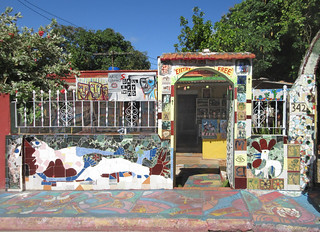
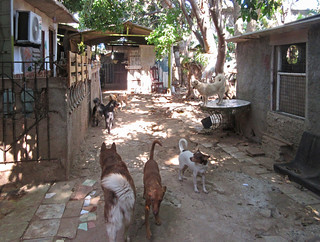

But the resulting prints (all for sale, of course) seemed quite good and reasonable in price. Let's just enjoy a few of the artists work without commentary.
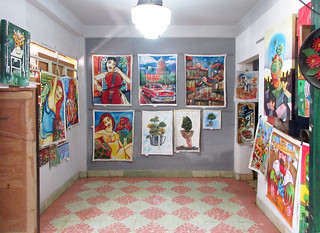



As Abel and I proceeded down the road, Linda took a few photos including an iconic "mosaic photo" of the opening round of Cuba's 1950's revolution.


It turns out that Hemingway's Pilar is not the most recognizable boat in Cuba. This 60-foot cabin-cruiser, the Granma, also produced by the Wheeler Shipyard of Brooklyn, with its four square portholes takes that honor. In 1956, it transported 82 revolutionaries from Mexico City to Cuba to begin the fight to overthrow the existing government. Full story here and here.
We shortly arrived at Fuster Land. Admission, one U.S. dollar. Once again, just enjoy the pictures. Words are inadequate!
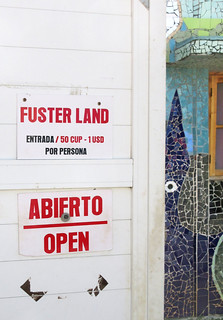
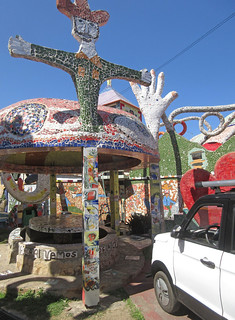
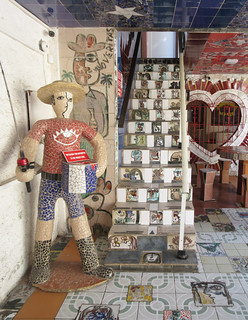

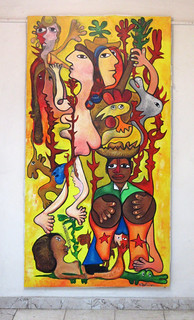
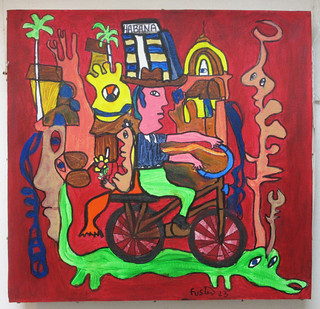
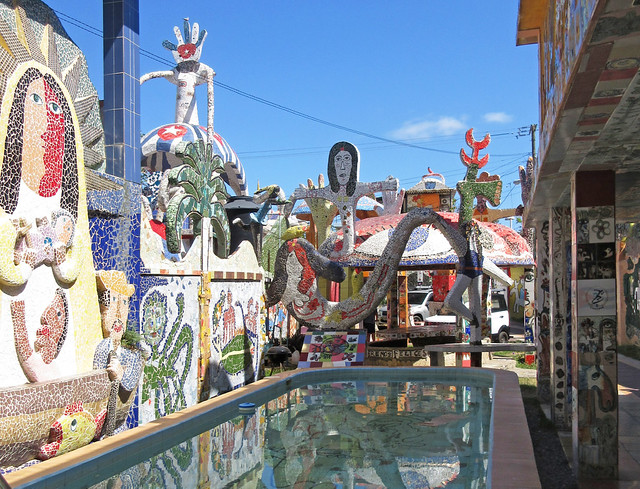



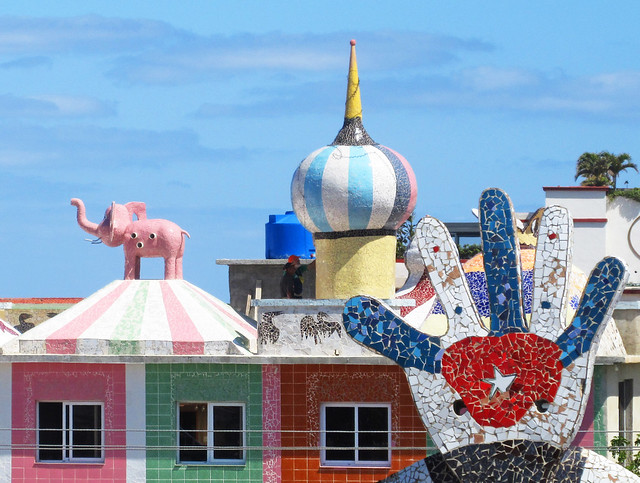

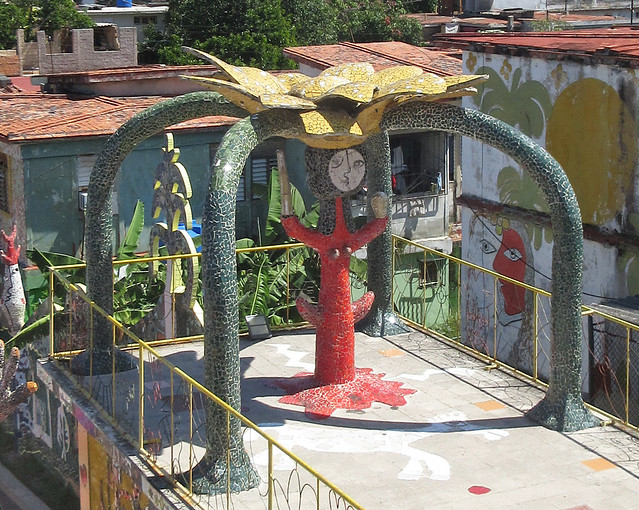




After touring Fuster Land proper, we crossed the street to visit "Princesa Diana" where we met a couple of artists in residence.



Then we were off to the Hemingway Marina, our original destination.
Are there more pictures available? Of course. Just click on this link to go to our Fusterlandia Album on Flickr.






No comments:
Post a Comment